The coronavirus pandemic is poised to exacerbate fragility and violence worldwide. It comes at a time when the United States government is developing its first ever global fragility strategy, as required by the 2019 Global Fragility Act. This strategy is an opportunity for the United States to posture itself to reduce violence and fragility in a manner that positions America to secure short-term interests, compete with its geopolitical rivals, and address the fallout from COVID-19.
However, the U.S. needs to carefully prioritize its core interests as well as set forth an outcome-oriented theory of success for realizing them.
Enduring fragility
In the run-up to COVID-19, fragility and associated violent conflict showed no signs of abating. Over the last decade, intra-state violence between states and armed challengers increased sharply. During roughly the same period, deaths from violent conflict rose by 140%. Citizens in affected countries have suffered considerably — 53,000 died and 13.6 million were forcibly displaced in 2018 alone. Persistent forms of violence extend beyond combat between the state and armed actors to include intra-group violence rooted in ethnic, political, and religious divisions, often fueled by criminal opportunities.
The pandemic will exacerbate these trends. Fragile states with strained health systems, fractured governments, and dwindling liquid assets will struggle to contain the outbreak, let alone effectively flatten the curve. Countries with active conflicts, like Libya and Somalia, will find it even more difficult to suppress the coronavirus. Despite claims that the pandemic could lead to a surge in peace, it will likely do the opposite. The health crisis might temporarily hinder non-state armed actors’ operations but will not displace their ambitions, whether to oust the target regime or advance financial interests. Grievances already at the core of ongoing armed conflicts, which these groups exploit, will likely worsen as leaders mount sub-par responses to the pandemic or protect themselves and cronies at the broader population’s expense.
Authoritarian regimes prone to using government resources to suppress dissent, sometimes violently, are stepping up these tactics and exploiting the crisis to consolidate power. Already closing space for civil society and democratic actors, a foundational element of stability, may collapse further.
The consequences of fragility and conflict for the United States are clear. Terrorist organizations exploit instability to orchestrate attacks on U.S. assets and allies. Violence hinders U.S. companies’ access to valuable markets and strains supply chains. Fragility impedes governments’ ability to effectively address pandemics — past and present — and keep them within their borders, raising the prospect of regional diffusion and sustained infections.
The confluence of the above factors — already surging fragility and violence, with COVID-19 as a multiplier — magnify the relevance and timeliness of the forthcoming global fragility strategy.
Adversaries exerting malign influence
Shifting from conflict within states to struggles between them, the proliferation of the coronavirus is occurring amid heightened competition between the United States and the Chinese Communist Party (CCP). Revisionist attempts by the CCP to deconstruct the liberal order and perhaps displace the United States as the predominant world power is the paramount national security concern for America.
The tactics China uses to pursue this goal exacerbate instability that the global fragility strategy seeks to address. The CCP’s landmark Belt and Road Initiative (BRI), comprised of loans and infrastructure spending globally, not only weakens U.S. influence with recipient governments but, through opaque deals and associated corruption, has the potential to undermine democratic governance and underwrite fragility across the developing world.
Russia is not a great power by any modern measure but continues to harbor revisionist ambitions. The Kremlin uses its relatively small resource base to expand Russian influence abroad to distract from domestic failures and undermine the United States. From Eastern Ukraine to Venezuela, these actions affected U.S. strategic interests and created or intensified instability.
As a continuation of these strategies, the CCP and Kremlin have exploited COVID-19 to secure their interests and accelerate attempts to discredit U.S. leadership. The CCP is surging provision of medical equipment as well as employing a propaganda and disinformation blitz to replace the narrative of China’s failures with stories of its rapid reaction. The Kremlin has deployed medical equipment to countries like Italy and is orchestrating a massive disinformation campaign focused on sowing distrust around the virus’s origins, criticizing the Western response, and discrediting democracy as the best model for handling such situations.
Theory of success
The United States is developing its global fragility strategy in a strategic environment comprised of two inter-locking dynamics: intra-state violence with international consequences, and inter-state geopolitical competition that may exacerbate armed conflicts across the globe. The strategy must address both and build on existing policies, to include the 2018 Stabilization Assistance Review (SAR) and Trump administration’s Approach to Fragile States.
Setting a realistic goal and sound theory of success to achieve it is the keystone to any strategy. This is the most pressing conversation for U.S. officials before turning to who does what, when, and where.
In line with the strategy’s purpose as set forth in legislation, the goal should be reducing violence or instability in strategically important countries such that the United States can secure short and long-term American interests in these places. (This aligns with the act’s guidance that the global strategy “contribute to the stabilization of conflict-affected areas, address global fragility, and strengthen the capacity of the United States to be an effective leader of international efforts to prevent extremism and violent conflict.”) From there, the U.S. government must address two overarching questions. First, why does a specific place matter to U.S. interests? And second, how do we balance near-term wins in these places (getting the bad guys through counterterrorism operations) with longer-term realities and U.S. interests (addressing bad politics to position the United States to compete geopolitically)?
The goal should be reducing violence or instability in strategically important countries such that the United States can secure short and long-term American interests in these places.
This global strategy is an opportunity for the United States to forcefully recognize that, for too long, we have made policy decisions with near-term objectives — primarily counterterrorism or security-based — that have undercut our middle-term objectivities. The document should balance these near-term needs with mid-to-long term strategic necessities.
Even if the United States focuses resources only on those countries or regions that matter most, it will not be able to achieve its goals alone. Burden-sharing will be essential to the overall endeavor. To maximize the probability of effectiveness, the United States must cooperate with like-minded allies as well as work with and through multilateral organizations. With its allies, the United States can align priorities, share analysis, develop complementary plans and, where feasible, agree to a division of labor. Even as the United States works to reform multilateral forums like the United Nations, it must assert its leadership in them to get results on reducing fragility. This includes supporting multilateral instruments like the United Nations Development Programme (UNDP) that are often called on to head stabilization operations where the United States is not in the lead.
The global fragility strategy must have a theory of success to achieve its overall goal. Here is such a pathway: If the United States balances realizing near-term security gains with addressing conflict dynamics (and underlying fragility) required to secure longer-term interests; and if the United States develops an evidence-based understanding of priority conflict dynamics in selected countries that are negatively affecting U.S. interests; and if it deploys diplomacy and foreign assistance — bilaterally and with allied partners — that effectively disrupts these priority conflict dynamics; and if partner governments (local and national) demonstrate political will necessary to address said dynamics; then the United States will reduce violence sufficient to secure its interests in these countries; because it will have, with willing national or local governments, effectively disrupted those conflict dynamics that matter most.
The United States, for each priority country it selects, must articulate its top short- and long-term priority national security interests, determine how fragility and violence impinge upon them, and devise measurable metrics for holding itself accountable. Addressing violence and fragility must be a top priority in embassy planning rather than an afterthought.
In countries where stabilization is required, the United States should develop a political strategy of “strategic empowerment.” In line with the SAR, this approach involves supporting the local actor most aligned with U.S. interests and values, and that is likely to be able to govern effectively and manage violence.
Recommendations
The United States should incorporate the following elements into the global strategy to maximize probability of success, guided by the goal and theory of success outlined above.
First, competition with China, Russia, and Iran should be a core aspect of the global fragility strategy. It should articulate the specific ways each adversary exacerbates fragility and contributes to violence, and then prescribe evidence-based solutions for each rival.
Second, the political aspects of fragility and violence should guide the global strategy and country plans. Fragility is primarily a man-made problem and therefore inherently political. Fragility’s foundational elements — corruption, armed violence — do not merely happen to countries. Regimes foist these vulnerabilities on them. In crafting the global fragility strategy, therefore, the United States must deploy preventive diplomacy and foreign assistance to disrupt conflict dynamics by publicly or privately targeting actors enabling violence or otherwise contributing to fragility.
Finally, supporting good governance should be a core pillar of the overall effort. Ineffective governance and corruption are drivers of violence. If the United States is to prevent violence from breaking out, it must prioritize bolstering democratic governance in the places that matter most. This is also essential for curbing Chinese and Russian influence in strategically important countries. U.S. support for democratic institutions can help bolster partner nations against the efforts of foreign authoritarians to shape their domestic politics.
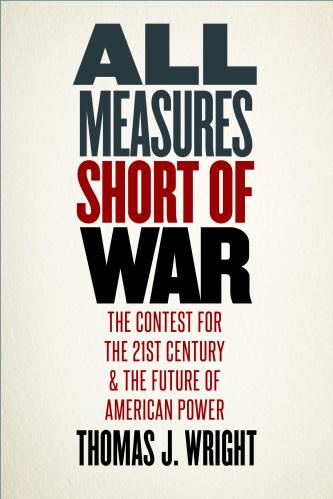

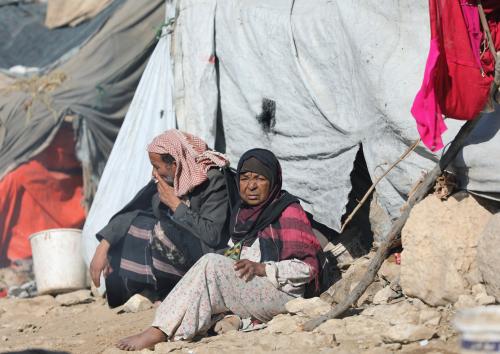
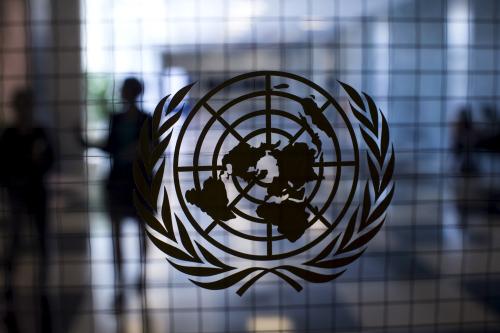

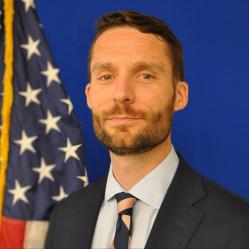
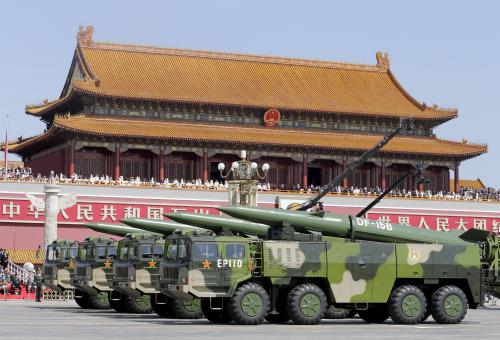

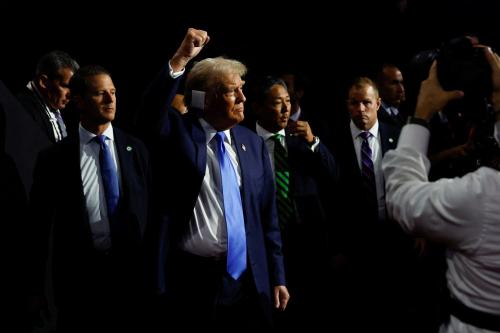
Commentary
The global fragility strategy: Posturing the United States for a reshaping world order
May 15, 2020